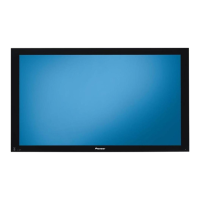
Do you have a question about the Pioneer PDP-436FDE and is the answer not in the manual?
| Depth | 92 mm |
|---|---|
| Width | 1076 mm |
| Height | 632 mm |
| Weight | 25800 g |
| Pixel pitch | 0.99 mm |
| Aspect ratio | 16:9 |
| Product color | Black |
| Display diagonal | 43 \ |
| Display brightness | 1100 cd/m² |
| Display resolution | 1024 x 768 pixels |
| Display technology | Plasma |
| SCART ports quantity | 3 |
| Contrast ratio (typical) | 3000:1 |
| Display diagonal (metric) | 109 cm |
| Power consumption (standby) | 0.4 W |
| Power consumption (typical) | 292 W |
General advice for optimal use and screen longevity.
Precautions for safe and proper physical setup of the unit.
How the system protects the screen from damage by still images.
Explains the possibility of dead or stuck pixels on plasma displays.
Discusses potential interference from infrared rays emitted by the display.
Addresses potential interference with other electronic devices.
Describes normal operational sounds like fan or circuit hum.
Explains potential screen image retention or lag from static images.
Covers electrical safety, handling, cleaning, and proper placement of the unit.
Emphasizes proper airflow and avoiding extreme environmental conditions.
Advises on safe lifting and handling due to product weight.
Detailed guidance on installing the unit using stands or wall mounts securely.
Lists items included with the Plasma Display unit.
Lists items included with the Media Receiver unit.
Identifies and explains the front and rear parts of the Plasma Display.
Identifies and explains the front and rear parts of the Media Receiver.
Details the functions and layout of the remote control buttons.
Instructions for physically setting up the Plasma Display.
Instructions for physically setting up the Media Receiver.
Guidance on securing the display to prevent accidental tipping.
Step-by-step instructions for connecting the system cable between components.
Instructions on how to neatly manage and route cables using supplied accessories.
Instructions for inserting batteries and handling the remote control.
Explains connecting the antenna and power cord to the system.
How to power the system on, off, and into standby mode.
Instructions for tuning to channels using remote buttons and number keys.
How to access and tune to pre-registered favorite channels.
Adjusting volume levels and muting the audio output.
Explains how to select different sound modes (stereo, bilingual, mono).
How to pause a video frame and cancel the freeze function.
General guide to navigating and using the system's menu structure.
Guide to automatically scanning and storing TV channels.
Instructions for manually tuning and setting individual TV channels.
How to improve picture quality by reducing video noise for specific channels.
Instructions to block specific TV channels from tuning or viewing.
Assigning a decoder to a specific input terminal for proper viewing.
How to assign custom names to TV channels for easy identification.
Procedure to reorder the sequence of stored TV channels.
How to set the system's internal clock for accurate time display.
Selecting display languages for menus and Teletext.
Choosing picture presets (Standard, Dynamic, Movie, Game, User) based on viewing conditions.
Fine-tuning picture settings like contrast, brightness, and colour.
Using advanced functions like PureCinema for picture optimization.
Adjusting colour temperature for optimal white balance and tone.
Enhancing colour contours for clearer images.
Fine-tuning specific colour tones (R, Y, G, C, B, M) for precise colour reproduction.
Applying DNR and MPEG NR to reduce noise in video images.
Optimizing contrast and brightness levels for enhanced image depth.
Functions for improving motion smoothness and signal conversion.
Customizing audio settings like treble, bass, balance, and reset.
Shifting sound direction upward and improving sound contours.
Enabling three-dimensional sound effects and rich bass.
Managing power consumption through energy-saving modes.
Adjusting screen refresh rate for optimal display with broadcasting signals.
Fine-tuning the horizontal and vertical placement of images on the screen.
Specifying video signal types for connected external equipment.
Selecting appropriate colour systems (PAL, NTSC, etc.) for clear images.
Manually choosing screen aspect ratios (4:3, Full, Wide, Zoom, Cinema).
Enabling the display to automatically adjust screen size based on WSS signals.
Configuring how 4:3 signals are displayed (Wide or 4:3 mode).
Adjusting the brightness of side masks in 4:3 modes.
Setting the TV to automatically turn off after a specified period.
Setting up a password for child lock and menu access.
Procedure to change the existing password for security.
Restoring the password to its factory default setting.
Turning off the password prompt for menu and channel access.
How to connect a decoder and view its output.
How to connect a VCR and view its output, including AV link.
Connecting and configuring HDMI devices for digital video and audio.
Features for smooth connection and control with compatible equipment.
How to connect a DVD player and view its output.
How to connect gaming consoles or camcorders for display.
Connecting external audio receivers for enhanced sound.
Introduction to Teletext services and information broadcast.
Turning Teletext on/off and navigating pages.
How to view multiple subpages transmitted with Teletext.
Accessing and viewing subtitle information transmitted with Teletext.
Navigating and viewing the TOP Over View for Teletext services.
Common problems and their solutions for the Plasma Display System.
Detailed pinout diagrams for SCART connectors (Input 1, 2, 3).
Technical details of the Plasma Display and Media Receiver models.
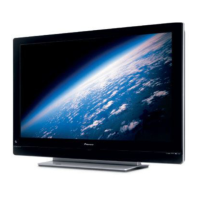
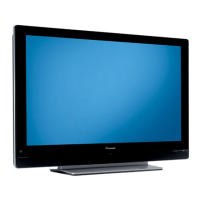

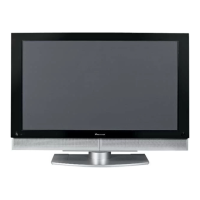



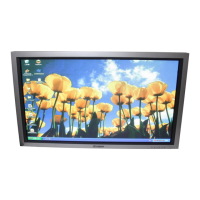
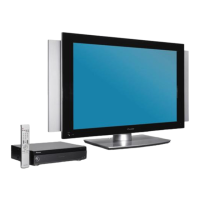
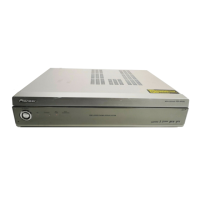
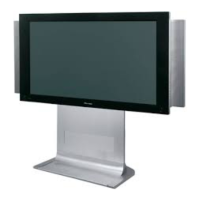
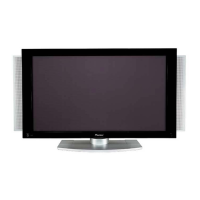
